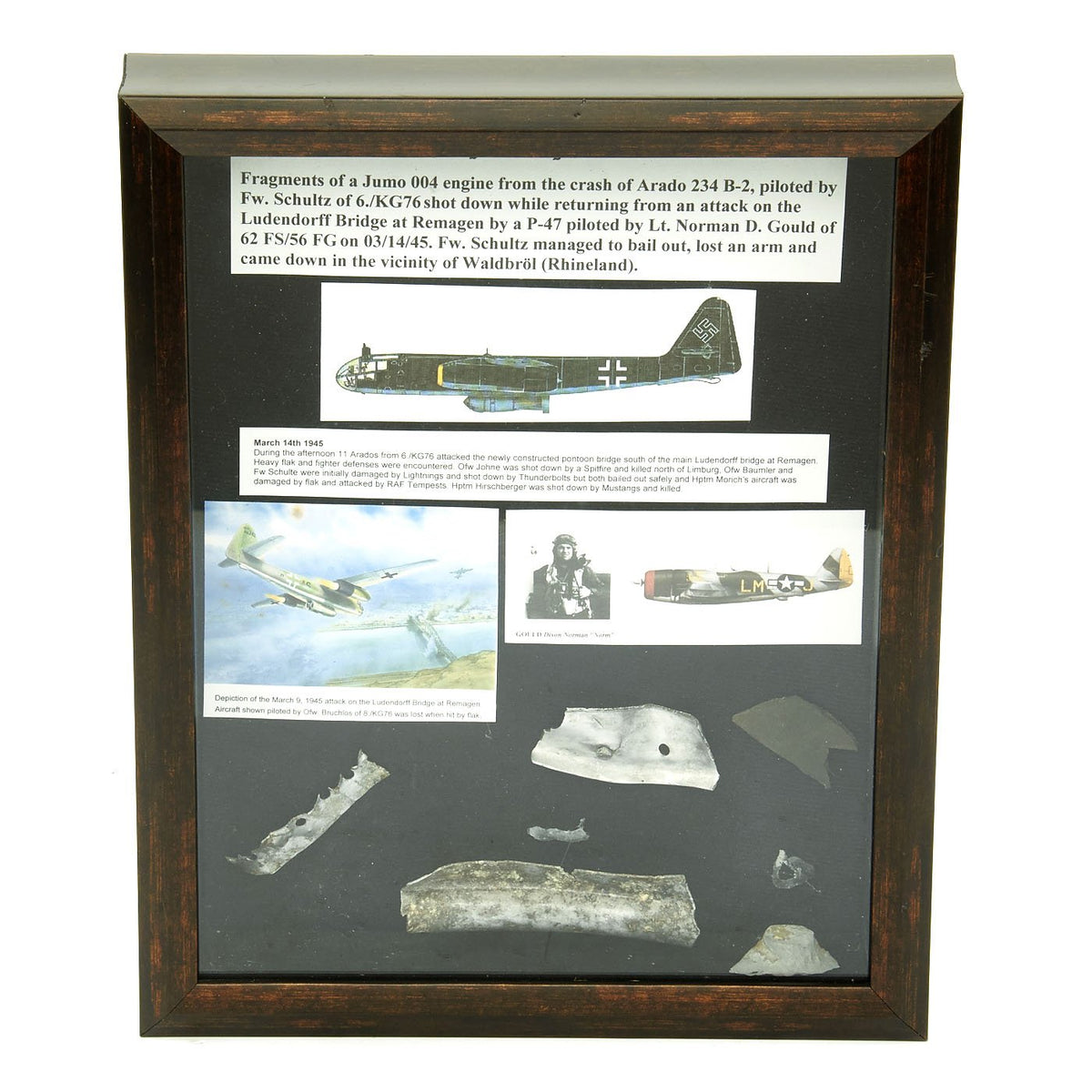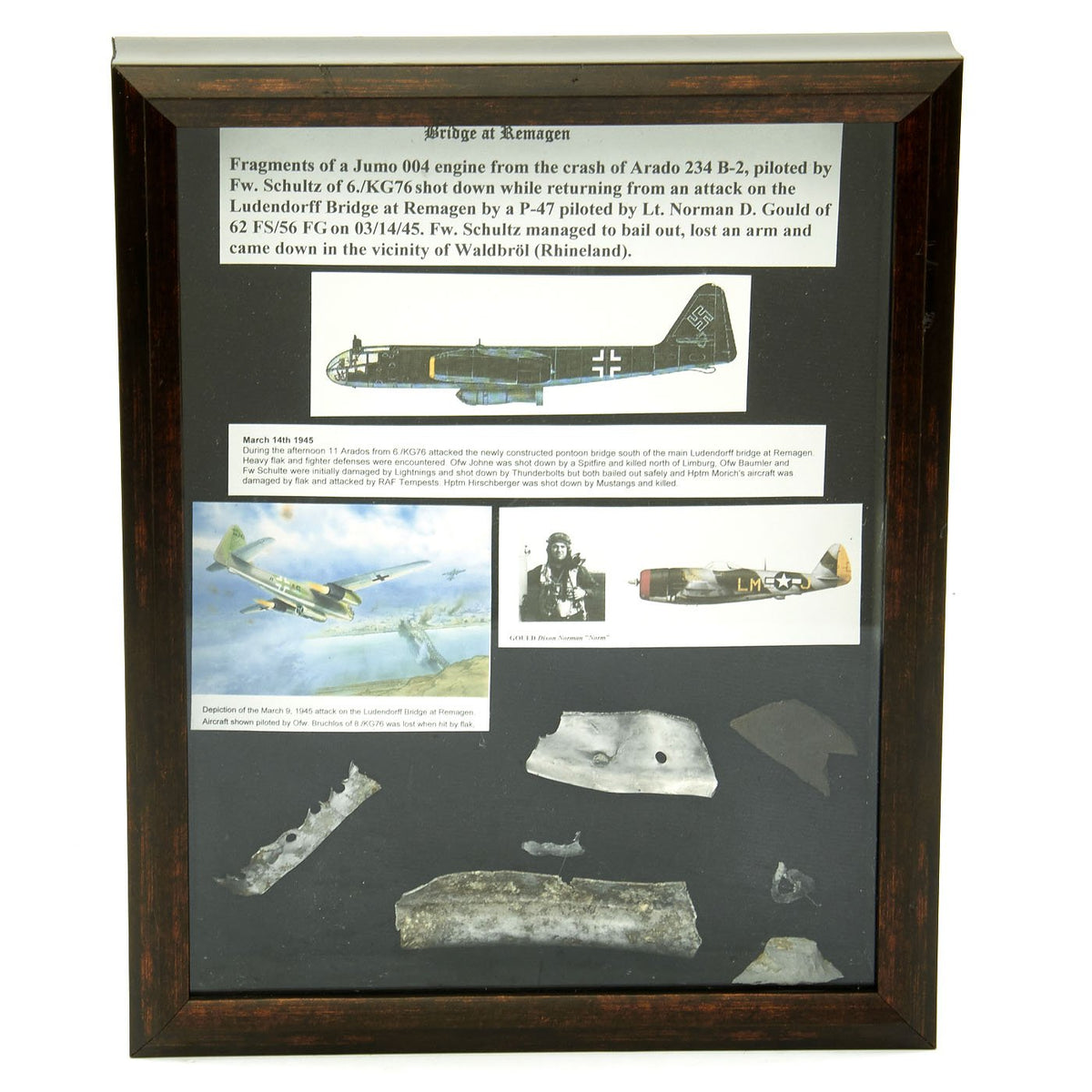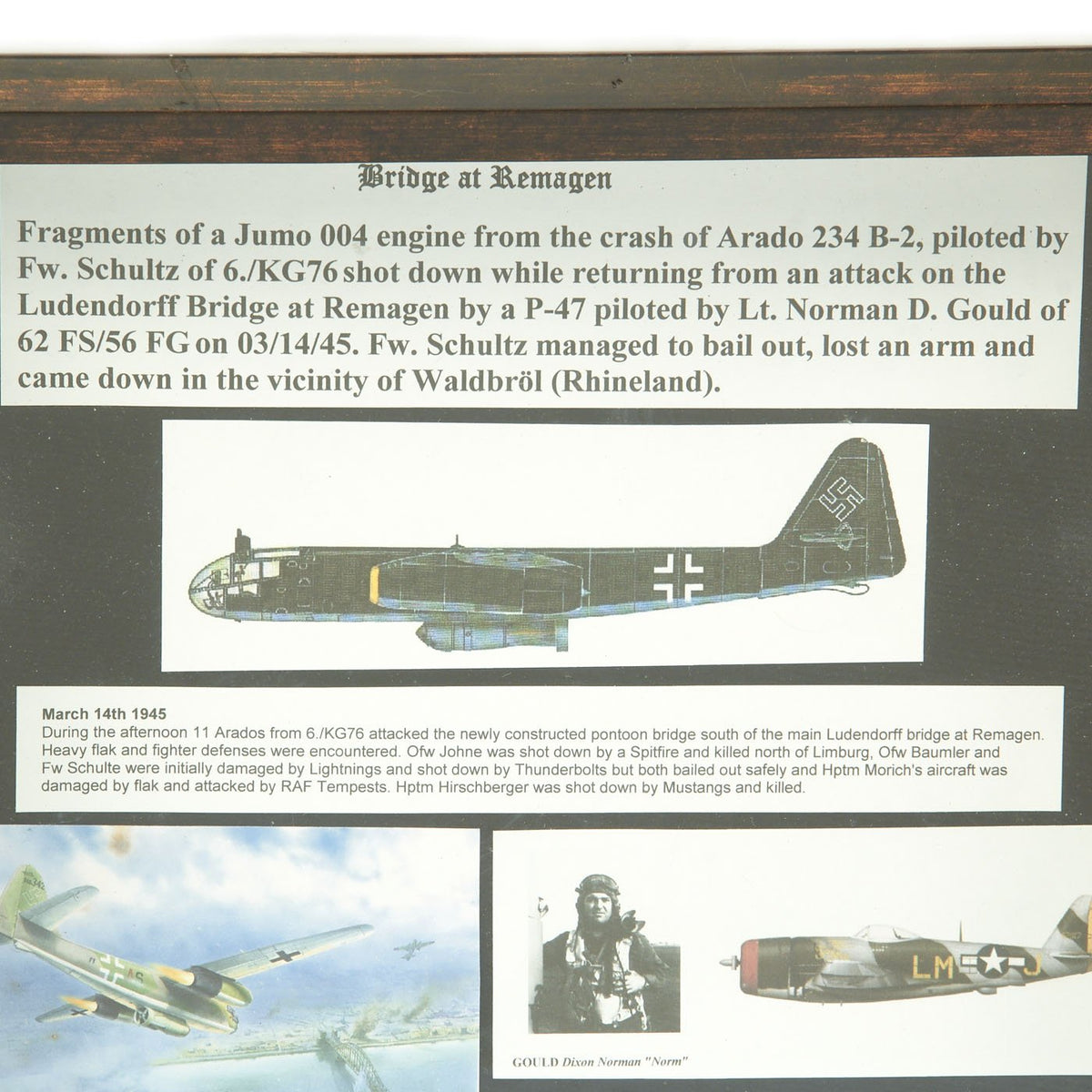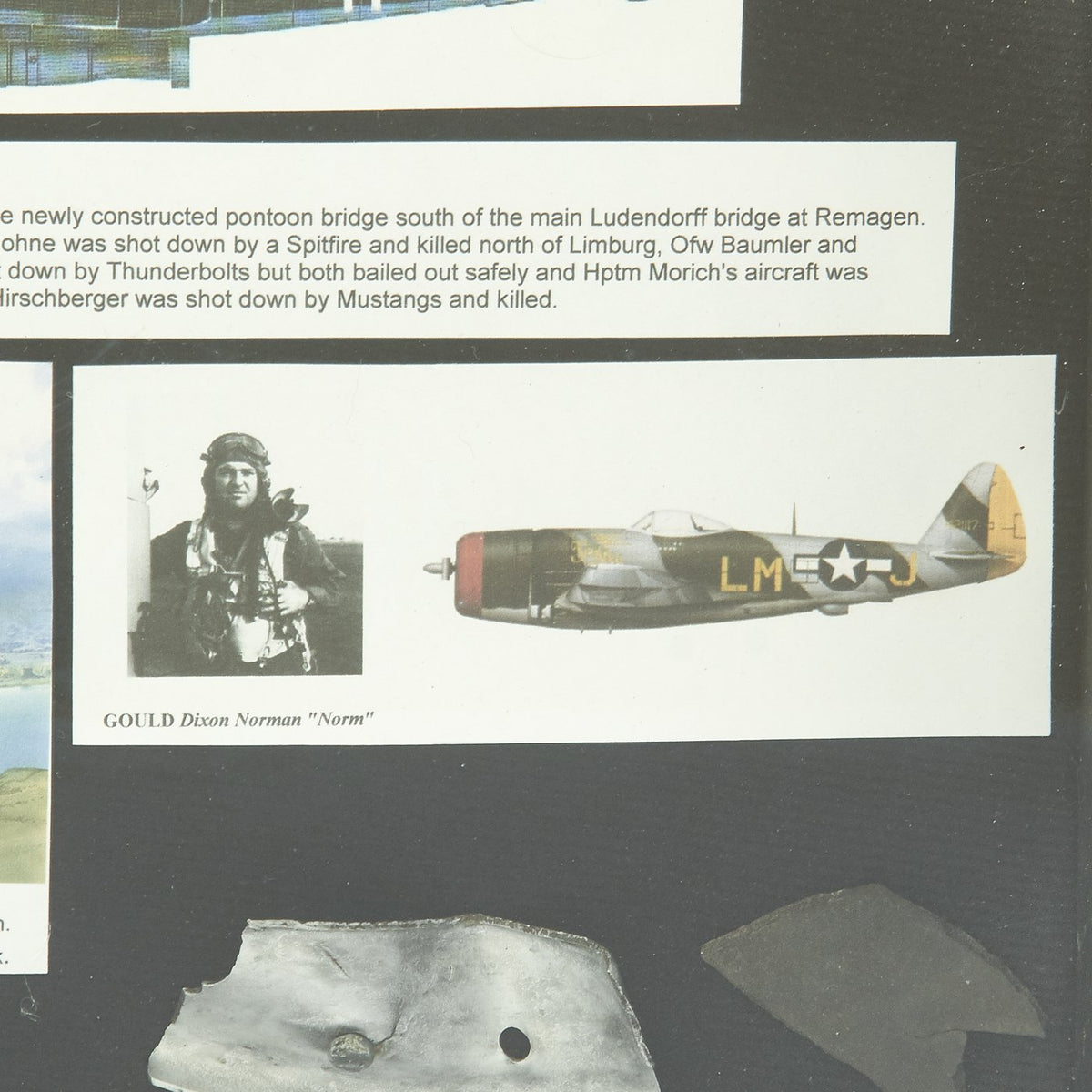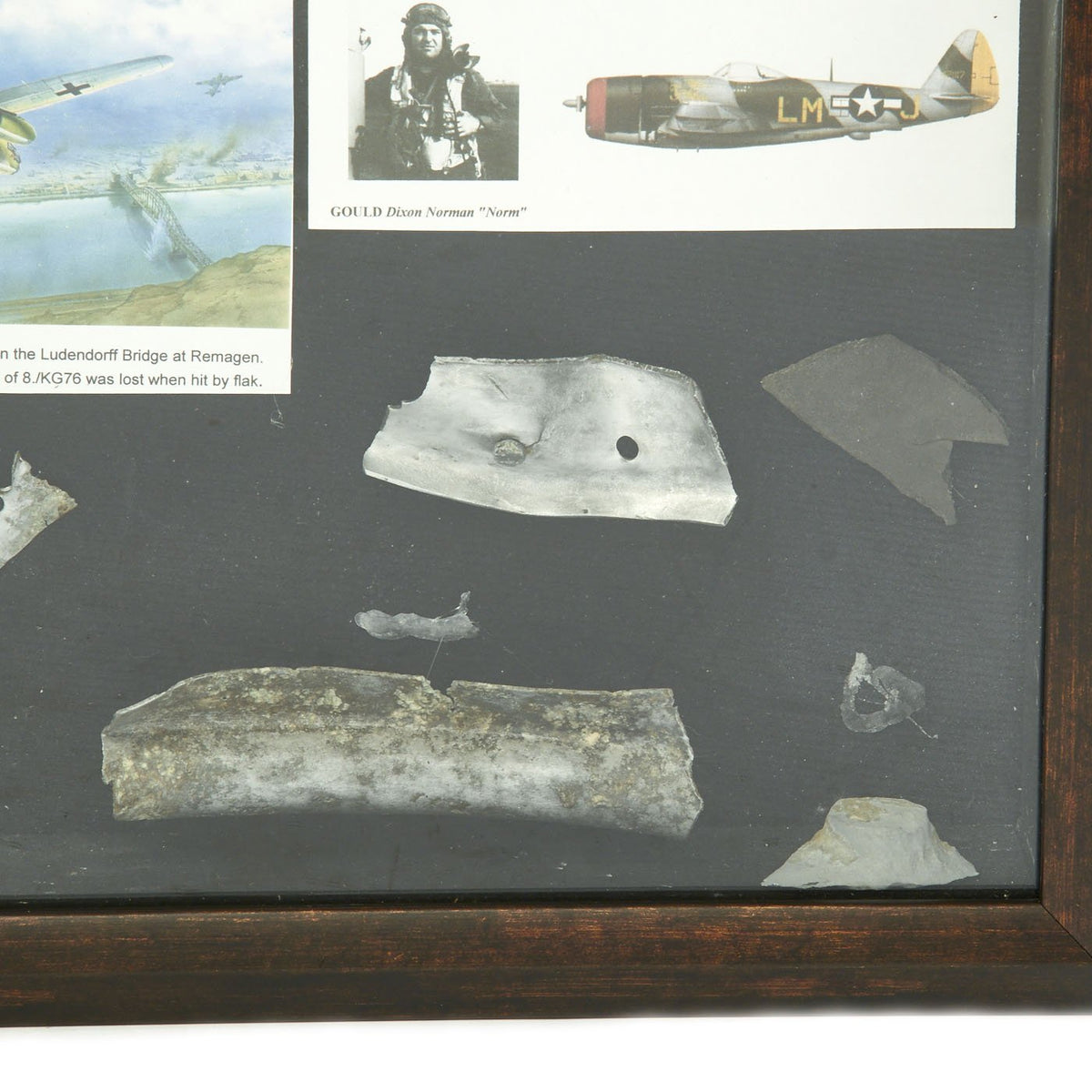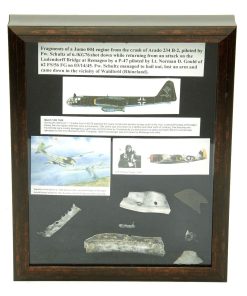Original German WWII Luftwaffe Downed Arado Ar 234B-2 Plane Souvenir Display Grouping – Battle of Remagen Original Items
$ 195,00 $ 78,00
Original Items: One-of-a-kind set. The Battle of Remagen during the Allied invasion of Germany resulted in the unexpected capture of the Ludendorff Bridge over the Rhine. After capturing the Siegfried Line, the 9th Armored Division of the U.S. First Army had advanced unexpectedly quickly towards the Rhine. They were very surprised to see one of the last bridges across the Rhine still standing. The Germans had wired the bridge with about 2,800 kilograms (6,200 lb) of demolition charges. When they tried to blow it up, only a portion of the explosives detonated. U.S. forces captured the bridge and rapidly expanded their first bridgehead across the Rhine, two weeks before Field Marshal Bernard Montgomery’s meticulously planned Operation Plunder. The GIs’ actions prevented the Germans from regrouping east of the Rhine and consolidating their positions.
The battle for control of the Ludendorff Bridge caused both the American and German forces to employ new weapons and tactics in combat for the first time. Over the next 10 days, after its capture on 7 March 1945 and until its failure on 17 March, the Germans used virtually every weapon at their disposal to try to destroy the bridge. This included infantry and armor, howitzers, mortars, floating mines, mined boats, a railroad gun, and the giant 600 mm Karl-Gerät super-heavy mortar. They also attacked the bridge using the newly developed Arado Ar 234B-2 turbojet bombers. To protect the bridge against aircraft, the Americans positioned the largest contingent of anti-aircraft weapons during World War II:189 leading to “the greatest antiaircraft artillery battles in American history”. The Americans counted 367 different German Luftwaffe aircraft attacking the bridge over the next 10 days. The Americans claimed to have shot down nearly 30% of the aircraft dispatched against them. The German air offensive failed, even with the new bombers.
This very nice display box contains engine fragments from one of the very Arado Ar 234B-2 bombers that attacked the bridge area. Per the information provided, the fragments contained in the case are from the Jumo 004 engine in the Arado Ar 234B-2 piloted by Fw. Schultz of 6./KG76. The plane was returning from an attack on the Ludendorff bridge on March 14, 1945, when it was shot down by a U.S. P-47 Mustang piloted by Lt. Norman D. Gould of 62 FS/56 SG. Fw. Shultz managed to bail out, but lost an arm, and came down in the vicinity of Waldbröl in the Rhineland.
There is further information regarding the activities around the bridge on that day, as well as illustrations of the aircraft involved. There are 5 fragments inside of the display case, and originally all were glued to the backing, however one piece has worked its way loose. The case, which measures 15 1/2″ x 12″ x 2 1/2″, also has a plastic pocket in the back, which has a very nice short book regarding the Arado 234B, as well as some pictures taken, apparently at the crash site in 2014.
A very nice display case, which would fit well into any WWII European Theater collection. Ready to display!
The Arado Ar 234 Blitz (English: lightning) was the world’s first operational jet-powered bomber, built by the German Arado company in the closing stages of World War II. Produced in limited numbers it was used almost entirely in the reconnaissance role. In its few uses as a bomber it proved to be nearly impossible to intercept. It was the last Luftwaffe aircraft to fly over the UK during the war, in April 1945.
Fast Shipping with Professional Packaging
Thanks to our longstanding association with UPS FedEx DHL, and other major international carriers, we are able to provide a range of shipping options. Our warehouse staff is expertly trained and will wrap your products according to our exact and precise specifications. Prior to shipping, your goods will be thoroughly examined and securely secured. We ship to thousands clients each day across multiple countries. This shows how we're dedicated to be the largest retailer on the internet. Warehouses and distribution centres can be located throughout Europe as well as the USA.
Note: Orders with more than one item will be assigned a processing date depending on the item.
Before shipping before shipping, we'll conduct a thorough inspection of the items you have ordered. Today, the majority of orders will be delivered within 48 hours. The delivery time will be between 3-7 days.
Returns
The stock is dynamic and we cannot completely manage it because multiple stakeholders are involved, including our factory and warehouse. So the actual stock may alter at any time. It's possible that you may not receive your order once the order has been made.
Our policy is valid for a period of 30 days. If you don't receive the product within 30 days, we are not able to issue a refund or an exchange.
You can only return an item if it is unused and in the same state as the day you received it. You must have the item in its original packaging.
Related products
Uncategorized
Armored Burgonet Helmet & Polearm from Scottish Castle Leith Hall Circa 1700 Original Items
Uncategorized
Uncategorized
Uncategorized
Uncategorized
Australian WWII Owen MK1 Machine Carbine SMG Custom Fabricated Replica with Sling Original Items
Uncategorized
Uncategorized
Uncategorized
Angolan Rebel 1970s era 60mm Inert Display Mortar from Angolan Civil War Original Items
Uncategorized
Uncategorized
Uncategorized
Uncategorized
Uncategorized
Uncategorized
Uncategorized
Uncategorized
Uncategorized
Uncategorized
Uncategorized
Band of Brothers ORIGINAL GERMAN WWII Le. F.H. 18 10.5cm ARTILLERY PIECE Original Items
Uncategorized
